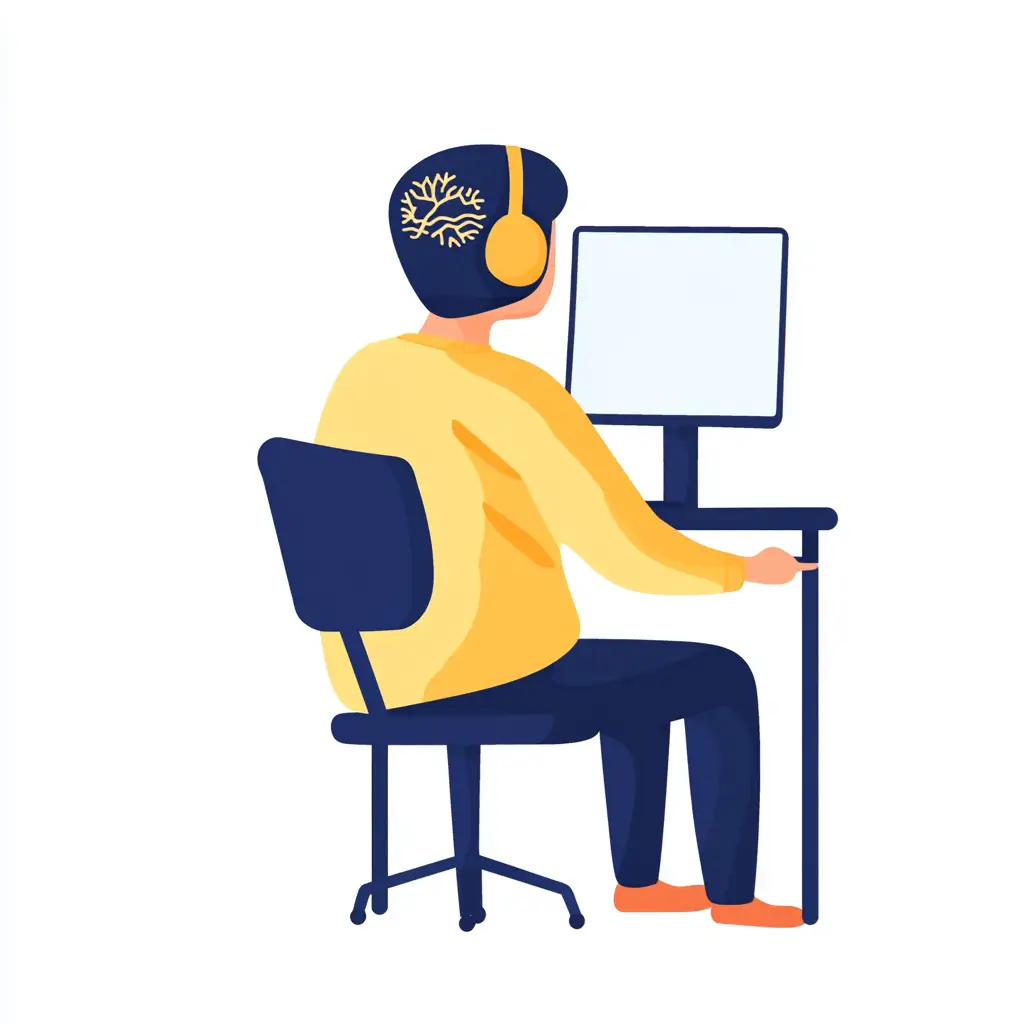Human Factors
Ergonomics Research Lab
Explore the potential of ergonomics research with iMotions’ Human Factors solution, designed to deliver deep insights into human behavior. By integrating cutting-edge sensors and software, iMotions enables you to evaluate cognitive, environmental, and physical factors, helping you optimize workspaces, products, and environments for enhanced comfort, safety, and performance.







Introducing iMotions Ergonomics Research Lab
Feature Highlights
Physical Ergonomics
Cognitive Ergonomics
Environmental Ergonomics
iMotions’ platform empowers researchers to explore physical ergonomics through advanced biosensors and data integration. These features enhance every phase of ergonomics research, enabling iterative improvements in product design, workstation layout, and overall human performance by evaluating physical interactions, postures, and movements within the work environment.
Muscle strain
Measure muscle activity to asses physical strain caused by posture and movement. EMG (Electromyography) data reveals how different tasks and postures affect muscle exertion, enabling adjustments to reduce fatigue and improve user comfort.
Heart rate and behavior
Monitoring heart rate and variability assesses physical and emotional stress during interactions with ergonomic designs. ECG (Electrocardiography) data reveals how different environments and postures impact cardiovascular responses, enabling adjustments to improve user well-being and reduce fatigue.
Respiration
Detect onset of fatigue through breathing patterns and get insights into intensity of physical activity through tidal volume.
Video observation and scene view
Sync multiple video streams to get the full picture of body posture, environment and other factors with live view and post annotation tools.
APIs & Integrations
iMotion Lab is designed for multimodal research, making it easy to synchronize data from multiple modalities and sources. From native integrations of third-party hardware to built-in event API and LSL support the lab makes the possibilities for connecting devices and other software endless.
Data Visualization and Analysis
Simplify the interpretation of complex ergonomic data both for individual subjects and aggregated data with intuitive visualization tools. Whether analyzing physical strain, mental workload, or environmental stressors, these insights inform critical design improvements to enhance user health and safety.
iMotions’ platform empowers researchers to explore cognitive ergonomics through advanced biosensors and seamless data integration. These tools provide valuable insights into mental workload, decision-making processes, and attention management, enabling researchers to improve product and workspace design for optimal cognitive efficiency.
Eye Tracking
Track user gaze patterns to understand how attention is distributed in physical environments, workspaces, or product interfaces. This data helps optimize layouts to reduce cognitive load, enhance usability, and improve physical interaction efficiency.
Measure cognitive load and engagement with EEG
Capture real-time brain activity to assess cognitive load during task performance in various ergonomic conditions. EEG data provides insight into mental workload, helping researchers understand how design changes—whether in physical workspaces or product interfaces—can reduce cognitive strain and enhance overall task efficiency.
ECG
ECG (Electrocardiography) data reveals how different interactions impact cardiovascular responses, enabling adjustments to improve user well-being and reduce fatigue.
Data Visualization and Analysis
Simplify the interpretation of complex ergonomic data with intuitive visualization tools. Whether analyzing physical strain, mental workload, or environmental stressors, these insights inform critical design improvements to enhance user health and safety.
iMotions’ platform empowers researchers to delve into environmental ergonomics by leveraging advanced biosensors and seamless data integration. These tools allow for precise evaluation of the impact of environmental factors such as lighting, temperature, noise, and air quality, facilitating iterative improvements to working and leisure environments, and product design to optimize comfort, safety, and productivity.
Eye Tracking
Track user gaze patterns to understand how attention is distributed in physical environments, workspaces, or product interfaces. This data helps optimize layouts to reduce cognitive load, enhance usability, and improve physical interaction efficiency.
Galvanic Skin Response/Electrodermal Activity
Measure physiological responses to environmental and physical stressors, such as temperature or workspace design. GSR data helps identify moments of heightened stress or discomfort, enabling researchers to optimize environments and products for improved user comfort and reduced cognitive strain.
ECG
ECG (Electrocardiography) data reveals how different environments impact cardiovascular responses, enabling adjustments to improve user well-being and reduce fatigue.
Think Aloud
Record and automatically transcribe everything being said with sentiment analysis and voice analysis, giving emotional context to spoken words.
Data Visualization and Analysis
Simplify the interpretation of complex ergonomic data with intuitive visualization tools. Whether analyzing physical strain, mental workload, or environmental stressors, these insights inform critical design improvements to enhance user health and safety.
How the Lab Works

- iMotions Lab enables efficient study setup, data collection, and analysis in a single platform to assess physical ergonomics factors like posture, movement, and task efficiency.
- By integrating hardware such as Eye trackers, EMG and ECG sensors, and cameras, iMotions provides synchronized data to analyze metrics like physical strain, mental fatigue, and overall ergonomics.
- iMotions integrates with survey platforms like Qualtrics, allowing researchers to gather subjective insights on comfort and strain alongside physiological and behavioral data.
For Measurable Improvements
The iMotions platform supports ergonomics research at every stage, enabling iterative improvements for workspaces, products, and environments.
Prototype Testing
Use iMotions to measure cognitive load, emotional responses, and physical interactions during early design stages, ensuring ergonomic efficiency from the outset.
Measure and optimize existing products
Capture objective physiological data to assess comfort, attention, and physical strain, optimizing user interactions with tools, spaces, or devices.
Performance and Safety Testing
Biometric data validates claims related to comfort, safety, and accessibility by assessing stress, relaxation, and cognitive load in various ergonomic scenarios.
Posture and Movement
Measure muscle activity to asses physical strain caused by posture and movement. EMG (Electromyography) data reveals how different tasks and postures affect muscle exertion, enabling adjustments to reduce fatigue and improve user comfort.
Regulatory Compliance
Use eye tracking and other sensors to ensure critical information in manuals or safety guides is visible, readable, and effectively understood, supporting ergonomic safety and compliance documentation.
A Versatile Platform
Supports numerous types of study setups

In-Lab Controlled
Environments

Online Testing

Virtual
Environments

Mobile Studies
Support and Training
All customers receive onboarding and training in using the software by our product experts.
Consultation & Demo before buying
We always make sure you are getting the right setup for your needs
Help center and Dedicated Support
Extensive help center with easy to follow articles and on-call product experts all days of the week.
Live Onboarding
All new users receive onboarding in using the software and hardware they have purchased
iMotions Academy
Become Certified in using iMotions in our 5 day intensive academy.
Our support staff works out of Copenhagen and Boston and have extensive experience using iMotions for research.
Pricing
All options include
- Support with 24h SLA
- A dedicated Customer Success Manager
- Access to helpful articles, videos and demo studies
- Frequent software updates and improvements
Prices reflect examples for various lab setups excl. hardware. Customize to fit your budget and needs.
Shown prices are for licenses.

